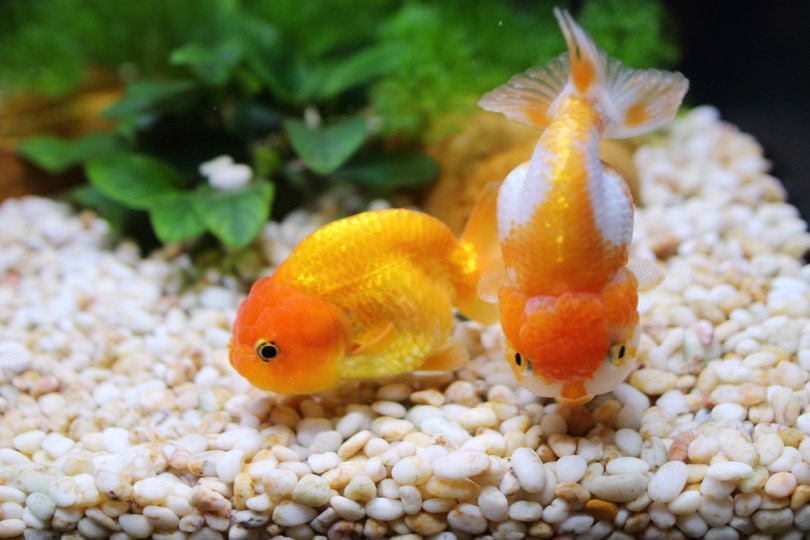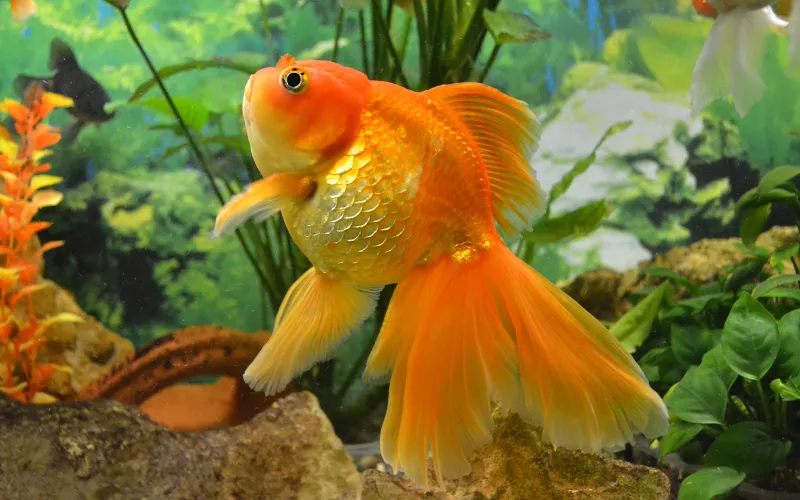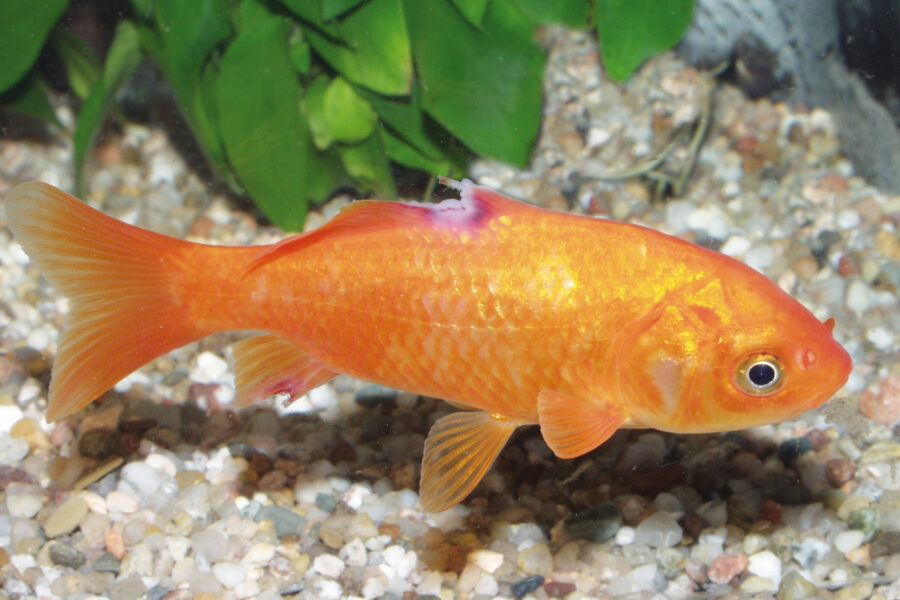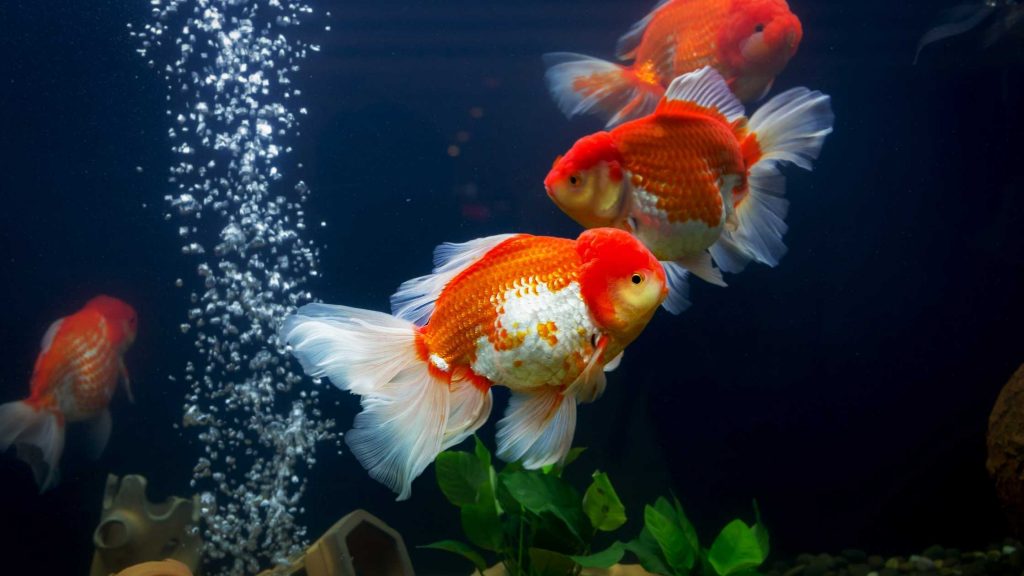
Welcome to Goldfish pH 101, an all-round guide to understanding pH levels in a Goldfish Tank! We’ll unravel the mysteries of the pH scale, examine its significance in your fish tank, and discover the ideal pH for a goldfish to truly thrive.
We’ll take a deep dive into the wide-reaching implications of pH imbalance from acidity overload to alkalinity spikes. By the end, appreciating why maintaining that all-important balance is critical to your goldfish’s well-being will be clear as crystal. Stay tuned, class is about to start!
Understanding pH Levels in a Goldfish Tank

There’s a party happening in your goldfish tank, and you are the DJ. The music? That’s the pH level. The goldfish are your party-goers, and they like a certain kind of groove! Let’s dive in, shall we?
The Basics of pH Scale
Think of the pH scale as a super stretchy seesaw. On one end, you’ve got acidity, waving at you with its 0, and on the other, alkalinity, chilling with its 14. Dead center, at 7, we have neutrality. It’s like the Switzerland of the pH world.
Significance of pH levels in a Goldfish Tank
Wondering why pH is your goldfish’s new BFF? It’s pretty simple. Too high or too low a pH range can create a hostile environment for your aquatic friends. It’s like playing their least favorite song on repeat. And nobody wants that at their party, right?
Ideal pH Level for Goldfish
Goldfish are pretty chill, even with pH. They aren’t picky, and they comfortably swim in the 6.0 to 8.0 range. However, a steady pH range of 7.2 – 7.6 is like their favorite tune, and they love to twirl their fins in it.
That’s your crash course on pH levels for goldfish. But what happens if we hit a sour note? What if the pH goes too low or too high? The party can turn pretty grim, pretty fast. Not to worry, though. We’re going to dive into that in our next section: “Implications of Imbalance in pH.” Buckle up; we’re about to go pH-scientific!
Implications of Imbalance in PH Levels in a Goldfish Tank

Navigating through the acidic and alkaline booby traps of your fish tank’s pH can be trickier than finding Nemo in the great ocean. But don’t worry – it’s easy when you know the implications of both sides of the spectrum. Let’s dive right in!
Consequences of High Acidity
An ocean of sour lemons, that’s how your goldfish views high acidity – unpleasant and potentially life-threatening. High acidity, often caused by decaying organic material, lowers oxygen levels, thus causing your goldish to gasp for air – a distressing sight for both you and your scaly friend.
Effects of High Alkalinity
On the flip side, a surge in alkalinity (the lemon’s egoistic twin) isn’t any better. A high alkaline environment is similar to throwing your fish into a wild rapids – disorienting and stressful. Excessive alkalinity can lead to damaging gill function and stunting your fishy’s growth – not the kind of grand growing journey they signed up for.
Why Maintaining Balance is Crucial for Goldfish
Much like Goldilocks’ porridge, everything in your goldfish’s tank needs to be just right – not too acidic, not too alkaline. A balanced pH safeguards the fish’s health and keeps the ghost of gill problems at bay. So it’s safe to say that an ideal pH level is the secret sauce to a swimmingly happy goldfish.
So now that we’ve covered the do’s and dont’s of pH levels, let’s drop anchor and find out how to be the Goldilocks of goldfish tank pH testing. Set sail for section 3, where we introduce pH level testing for the novice aquarist – you!
Steps to Measure pH Levels in a Goldfish Tank
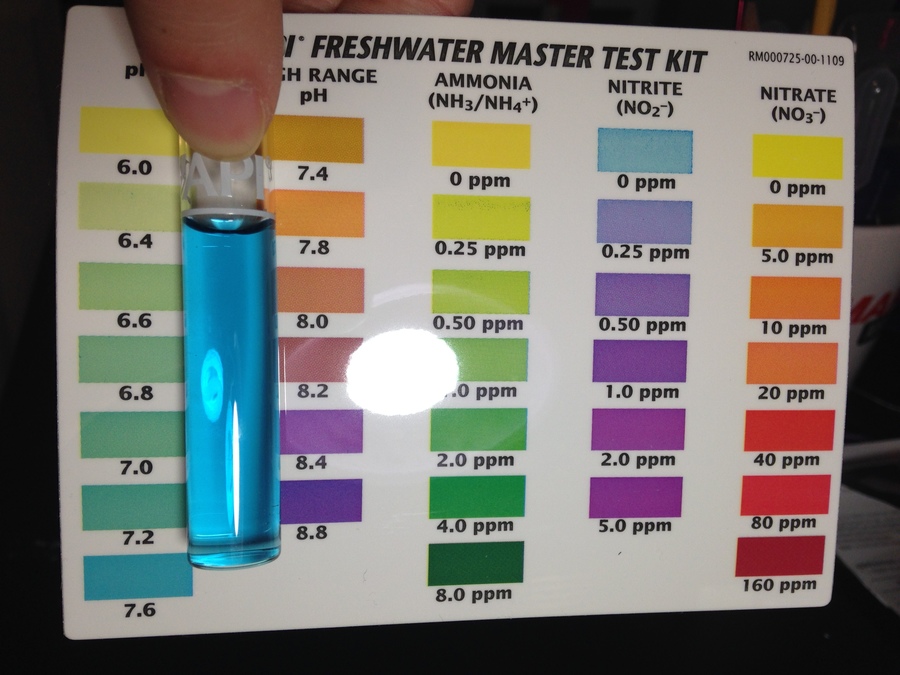
Ready to roll up your sleeves and dive into the aquatic world of pH testing? Perfect, let’s do this! Equipped with the right tools and the know-how, you’re about to upgrade your goldfish’s habitat from okay to extraordinary.
Recommended Tools for pH Testing
Imagine being a detective. Your crime scene: the goldfish tank. Your primary tool: a pH test kit. Several types exist, including liquid tests, test strips, and even digital pH meters. All have their pros and cons. Bottom line: you need to pick one and get comfortable using it. Your goldfish are depending on you, Sherlock Holmes!
Procedure for Measuring pH Levels
Okay, ace detective, it’s time to investigate. First, grab your chosen pH test tool. Next, collect a water sample from your goldfish tank. Follow the instructions of your test kit carefully. Remember—accuracy is key! Think meticulous scientist, not mad one.
Interpreting the Results
Once you’ve done the test, it’s time to decode those results. Read the color indicator or digital reading on your kit. Note: the ideal pH number for a goldfish tank hovers between 7-7.5. Anything under or over? We’ve got an aquatic mystery to solve!
Alright, Wonder Whiz of the Water World, now you’re equipped to keep a keen eye on your tank’s pH levels. But wait, there’s more! Up next is how to fix a tank that’s gone AWOL with its PH levels. Brace yourself for an exciting foray into the world of pH adjustments!
Achieving and Maintaining the pH Balance
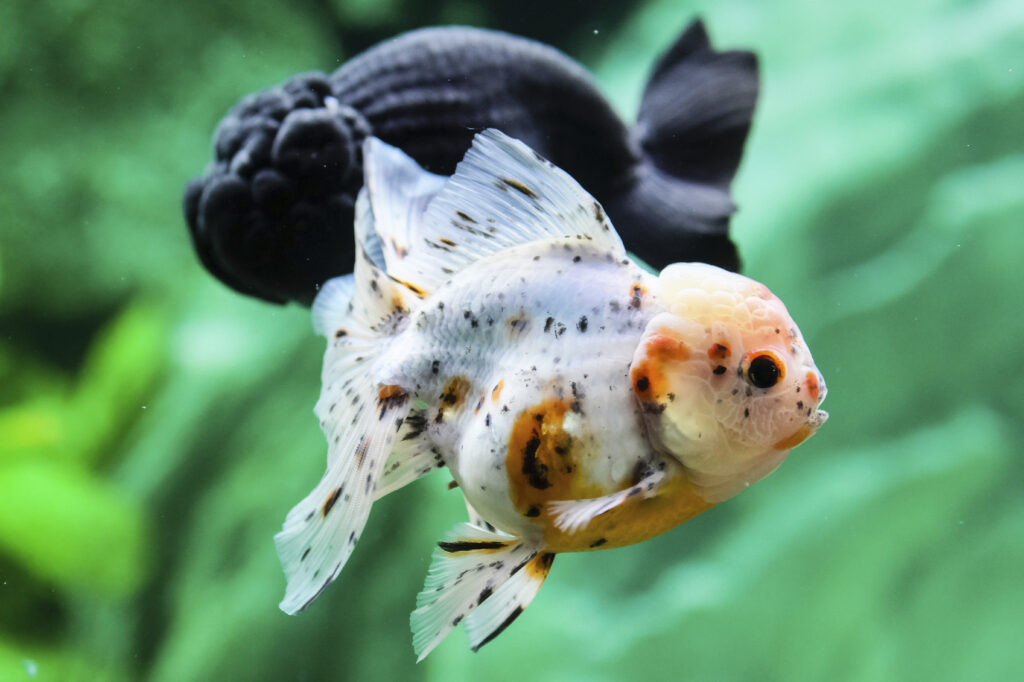
So, your goldfish’s pH level has been doing the salsa – swinging high, swinging low. Let’s talk about how to keep it steady in the middle.
In-Depth Look at pH Adjustments
Now, adjusting the pH isn’t a task for the impulsive. You can’t just splash in some vinegar or baking soda and call it a day. That could flip your goldfish’s world upside down! What you need is a proper pH adjuster, designed for aquariums. Before you start dosing, make sure you know your current level. It’s like GPS – you need to know your starting point to navigate the right path.
Okay, we’ve covered what you need to begin. But remember, little steps get us to the finish line too. In the next part, we’ll look at the do’s and don’ts of tank management. You’ll be a pro in no time.
Best Practices for Tank Maintenance
Maintaining an aquarium is like keeping a small world running smoothly. You own that ecosystem, buddy. First off, don’t go overfeeding your gold-dusted friends. Water changes are also crucial. Make it a routine; replace around 25% of the tank’s water weekly.
Avoid drastic changes. Nothing shocks fish more than a sudden shift in their environment. Similar to how humans wouldn’t enjoy teleportation from a freezing tundra to a desert, right? Now let’s glide over to the final part – acing a slow pH adjustment.
How to Slowly Adjust pH Levels Without Shocking Your Goldfish
Ever got pushed into the deep end of the pool by a naughty friend? Sure, you survived the shock but it’s not a great feeling. Our fin-tastic friends feel the same with extreme pH changes. Instead, dip your toes in. Change no more than 0.2 pH units per day. After all, it’s their home. Put the ph in phase, and your goldfish will thank you for it!
Now that we’ve tackled getting to your Goldilocks pH level, let’s forge ahead to troubleshoot some common issues that can pHrustrate you. Trust me, sticking to these guidelines, your goldfish tank will feel like a relaxing spa rather than a rollercoaster ride.
Common pH Balance Issues and Solutions
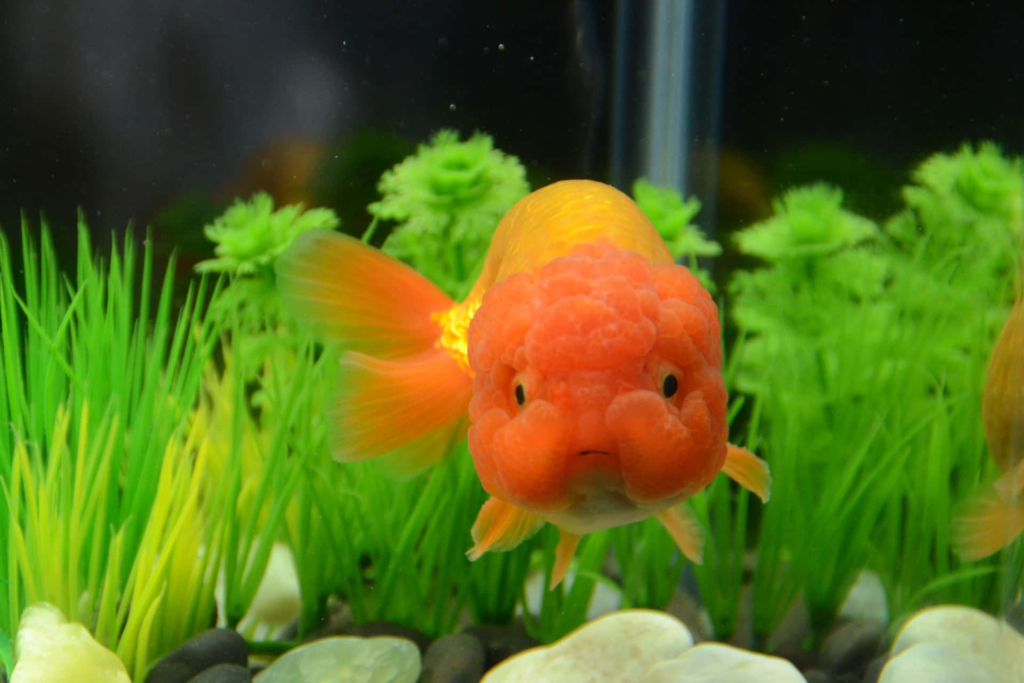
So you’ve mastered pH balance basics. You’re no longer a mere hobbyist, but a bona fide Goldfish Guru. Still, despite your best efforts, you’re facing pH issues that would stump even the great Poseidon himself. Fear not, mighty Aquarist! Here, we delve into the murkiest waters of pH balance and emerge victorious.
Dealing With Stubbornly High or Low pH
We’ve all been there. You treat your tank like it’s the Holy Grail. But that pesky pH level just won’t behave. It’s either riding the highest wave or settling in the Mariana Trench. That’s stubborn pH for you, playing hard to get. But believe it or not, you can win this game. You can use additives to raise or lower pH, but remember: go slow. Incremental changes, folks. Don’t send your poor little goldfish on a roller-coaster ride.
Transitioning smoothly from our carbonate hardness chat, let’s talk about tap water.
Role of Water Source in Fluctuating pH Levels
Here’s a fun fact: the water bill you begrudge every month can actually tip the pH balance in your tank. Tap water is often treated with chemicals that can mess with your carefully curated aquatic Eden. This can result in pH levels that swing like Miley Cyrus on a wrecking ball. To avoid this, better use conditioning products. Turns out, what goes around truly comes around.
Having grappled with water sources, let’s dive into an exciting challenge: pH swing.
Understanding and Handling ‘pH Swing’
pH swing sounds like an oddly specific dance genre. But it’s a real thing in the fish-keeping world. Simply put, when your tank’s pH fluctuates heavily, you’ve got a pH swing. This could be daily, weekly, or whenever it feels like messing with your cool, calm, and collected goldfish parenting skills. Keep your tank’s buffer capacity up to counteract pH swings. Remember, a well-buffered tank is a stable and happy tank.
So there you have it, brave pH warrior. A guide through the highs and lows (litmus speaking, of course) of goldfish tank pH balance.
To Sum Up
Grasping the basics of pH where the liveliness of your goldfish lies is mission critical. From knowing the significance of pH in fish tanks to mastering the skills of measuring and adjusting pH values, the underwater world of your finned friend begs for balance. Consequences of imbalanced pH can be as harsh as high acidity or alkalinity, and can play major spoilers for your goldfish’s health.
In the uphill battle against pesky pH problems, understanding common issues and working out reliable solutions is your best ammunition. Look into elements like the water source which can impact pH, and figure out ways to manage swingy pH levels. And remember, as you care for your gilled guests, slow and steady wins the pH race—no shocking drops or rises, please!
Frequently Asked Questions (FAQ)
Question: What is the ideal pH level for a goldfish tank?
Answer: Goldfish thrive best in a slightly alkaline environment. So, the ideal pH level for a goldfish tank is between 7.0 and 7.5.
Question: Why are balanced pH levels important for my goldfish?
Answer: pH balance affects a goldfish’s metabolism and overall health. Imbalances can lead to health issues like stress, lower immunity, and in some cases, can be fatal.
Question: How can I measure the pH level in my goldfish tank?
Answer: Use a pH test kit or pH meter. Follow the test kit instructions carefully, and ensure any meter you use is accurate and properly calibrated.
Question: What can I do if the pH level in my goldfish tank is too high or too low?
Answer: To raise pH, add a pH increaser or use crushed coral or limestone in your filter. To lower the pH, you can use a pH decrease or add driftwood to your tank. Always make changes slowly to avoid shocking your fish.
Question: What is ‘pH swing’ and how can I deal with it?
Answer: ‘pH swing’ refers to drastic fluctuations in pH levels. This may result from poor tank maintenance, overfeeding, or a high fish population. Regularly monitor your pH levels, conduct partial water changes, and keep your tank clean to prevent pH swings.

